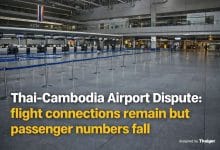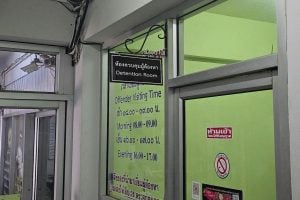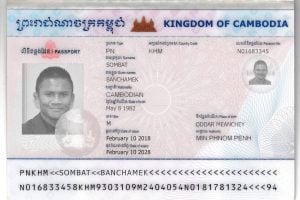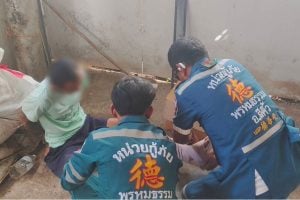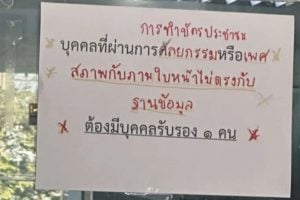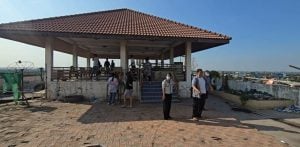10 destinations in Thailand that are under the radar
Hidden gems that you must visit at least once
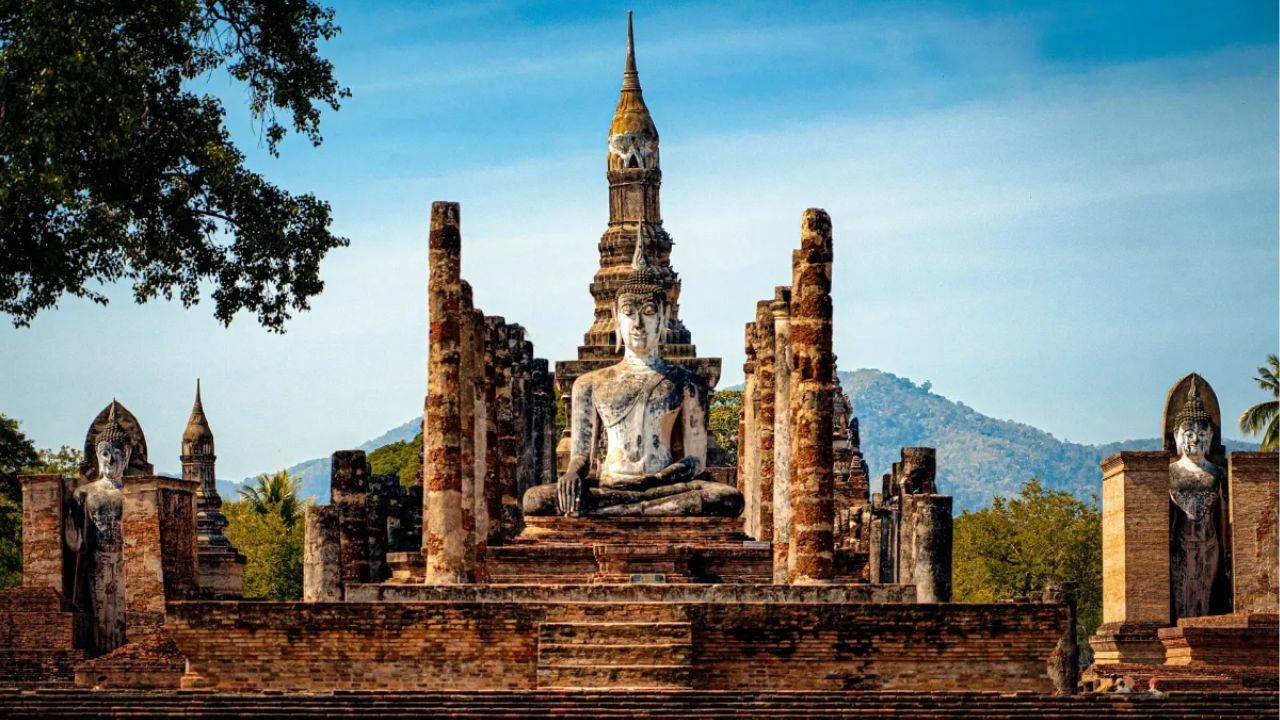
Places like Bangkok, Chiang Mai, and Phuket get most of the spotlight, but Thailand has so much more to offer if you’re willing to wander a little. Beyond the tourist trails are towns and destinations with old-school character, peaceful views, and flavours you won’t find in any travel app in Thailand.
These spots are for the curious traveller who prefers calm over crowds, and real moments over photo ops. From lakeside strolls to mountain sunrises, these ten underrated destinations show a quieter, deeper side of Thailand, still beautiful, just less expected.
And don’t worry about logistics, we’ll include tips on how to get there easily with 12Go, so all you have to do is pack your curiosity.
On this page
| Destination (Jump to section) | Attractions & Vibe | Local Food & Customs | Getting There |
|---|---|---|---|
| Koh Samet | Beaches, snorkelling and a quiet vibe | Seafood, BBQ and mango sticky rice | Bus from Bangkok, then ferry |
| Sukhothai | Historic park and temples | Sukhothai noodles, Loi Krathong festival | Bus or train from Bangkok |
| Koh Kood | Quiet beaches and waterfalls | Seafood, community meals | Bus + ferry from Bangkok |
| Mae Sot | Border market and ethnic mix | Burmese tea, Mohinga soup | A bus from Bangkok or Chiang Mai |
| Nong Khai | Mekong views and Naga Fireballs | Isaan dishes, Mekong fish | Bus from Chiang Mai or Chiang Rai |
| Phitsanulok | Temples and night markets | Kuay Tiew, grilled quail | Train or bus from Bangkok |
| Korat | Khmer ruins and night markets | Pad Mee Korat, grilled chicken | Bus or train from Bangkok |
| Lampang | Horse carriages and the old town | Sai ua, khao soi | Train from Chiang Mai |
| Phayao | Lakeside and serene vibes | Fish dishes, khao soi | Bus from Chiang Mai |
| Mae Sai | Border town and Golden Triangle | Tea leaf salad, samosas | Bus from Chiang Rai or Chiang Mai |
Koh Samet Beach
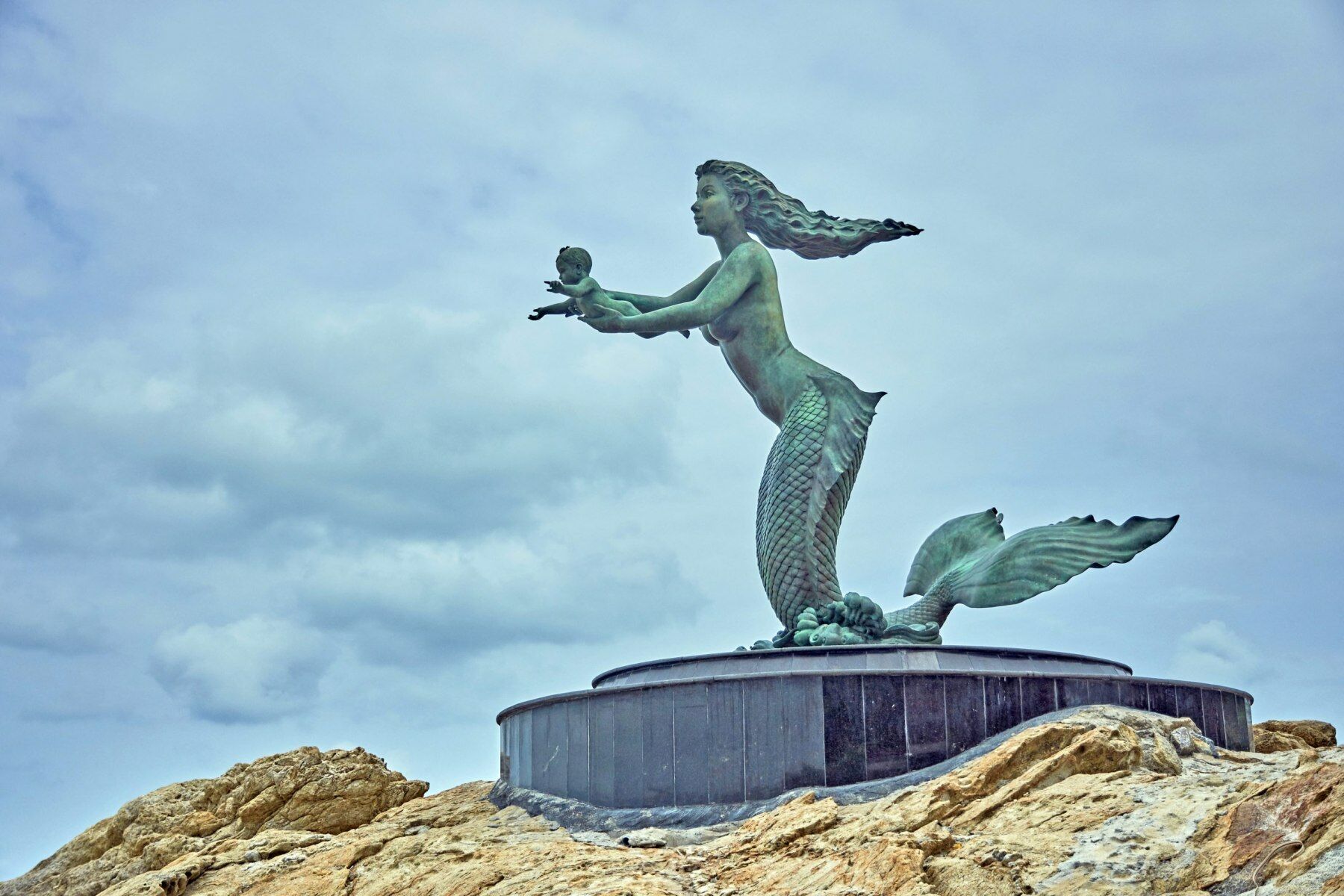
A destination in Thailand just a few hours from Bangkok, Koh Samet is a petite island that packs in big beach vibes. As part of a national park, Samet’s shores are blessed with powdery white sand and clear turquoise waters without the crowds that mob more famous isles.
It’s the kind of place where daytime means lazy beach hopping and snorkelling, and nighttime means beachside BBQs under starry skies. Legend even ties Koh Samet to Thai poetry, locals say a famous mythical mermaid from literature washed up here.
Attractions & vibe
Beyond sunbathing at Sai Kaew Beach or the quieter coves of Ao Wai and Ao Prao, you can hike modest jungle trails or catch a colourful fire-dancing show at night. The island is small enough to zip around on a rented motorbike or songthaew pickup taxi, discovering lesser-known viewpoints and the statue of the mythical mermaid from the poem Phra Aphai Mani.
Local food & customs
On the island, beach restaurants grill up the day’s catch, fresh seafood like prawns, squid, and snapper, often enjoyed as a spicy seafood papaya salad or simply barbecued with garlic and lime. Every meal can end with sweet mango sticky rice, which somehow tastes even better with an ocean view.
Culturally, Koh Samet is pretty informal (it’s a beach haven after all), but remember it is a national park: there’s a small entry fee, and conserving the island’s beauty (no littering!) is part of the unwritten code.
Basic accommodation like beach bungalows and guesthouses starts around 600–1000 per night.
Getting there
From Bangkok, hop on a bus or van to Ban Phe Pier in Rayong, which is bookable on 12Go. Buses leave from Ekkamai and take about 3.5 hours.
Ferries and speedboats then head to Na Dan Pier. 12Go also offers combined bus+ferry tickets. Once there, hop on a short songthaew to your beach.
Sukhothai Province
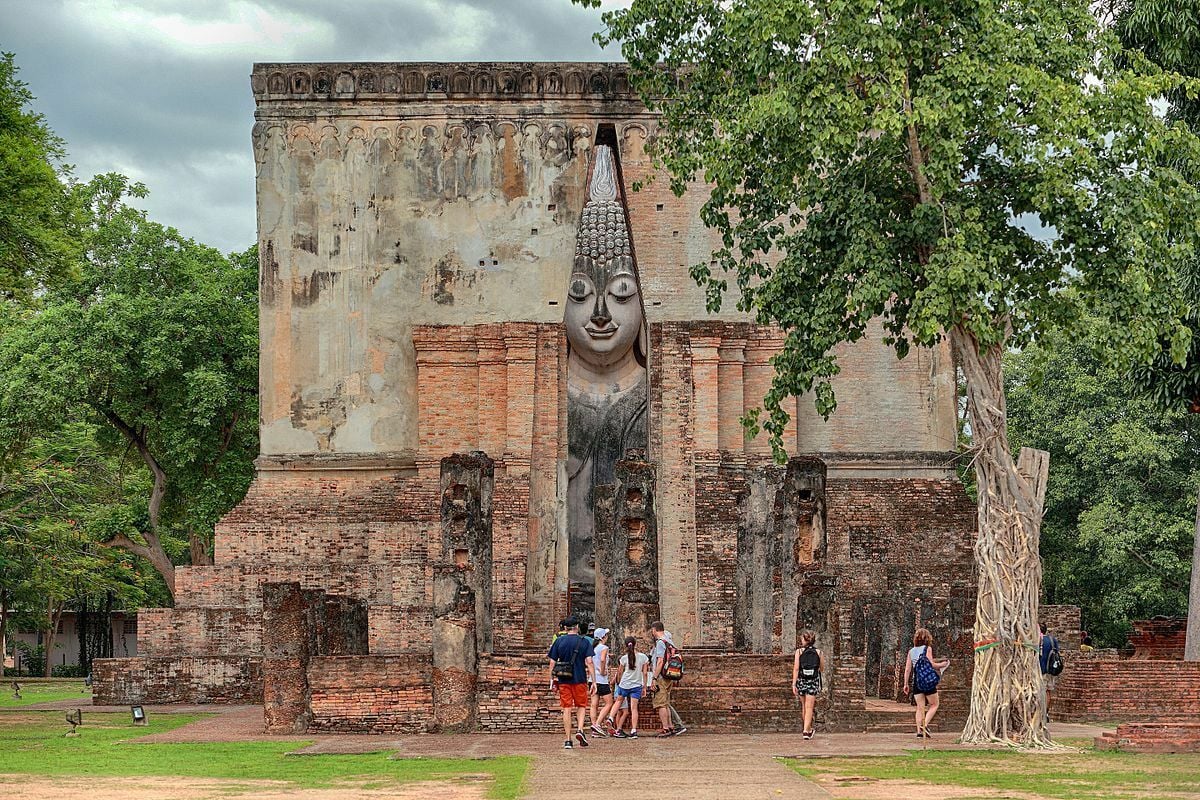
Ancient Buddha statues and crumbling chedis greet dawn in Sukhothai’s historic park
Travel back in time at Sukhothai, the 13th-century capital of Siam, where stone Buddha statues silently observe the centuries and brick chedis reach for the sky. “Sukhothai” means “Dawn of Happiness,” and indeed, an early morning here, with mist hugging temple ruins like Wat Mahathat, is pure joy for history buffs and romantics alike.
Attractions & vibe
The star of this destination in Thailand is Sukhothai Historical Park, a vast complex of temple ruins set amid lakes and lotus ponds. Picture red-brick temples and giant Buddha figures, many impressively intact, spread out in a park-like setting.
Highlights include Wat Mahathat’s lotus-bud towers, the massive seated Buddha of Wat Si Chum, and the elegant columns of Wat Sa Si by a tranquil pond.
Rent a bicycle for a few baht and meander under shady trees from one ruin to the next, it’s peaceful and remarkably uncrowded. Come sunset, the whole park glows golden, and you might just have a moment where you think you might be dreaming
Outside the historical zone, modern Sukhothai town offers a handful of museums and markets, but the vibe remains chill and distinctly local – a refreshing break from Thailand’s tourist trail.
Local food & customs
When in Sukhothai, slurp like a local! The city’s famous Sukhothai noodles come in a sweet-spicy pork broth with rice noodles, green beans, lime, peanuts, and a hint of sugar.
Visit in November for Loi Krathong, when the historical park glows with candlelit floats and fireworks. And don’t forget to dress modestly at temples – even ruins deserve respect.
A basic guesthouse stay in Sukhothai typically costs around 400 to 800 baht per night, depending on whether you choose a fan or air-conditioned room.
Getting there
Book a direct bus or train+bus combo via 12Go from Bangkok. Once there, rent a bike or catch a songthaew to the park. However, starting from the north, you can take various transportation options via 12Go that will start from Chiang Mai to Sukhothai.
Koh Kood Island
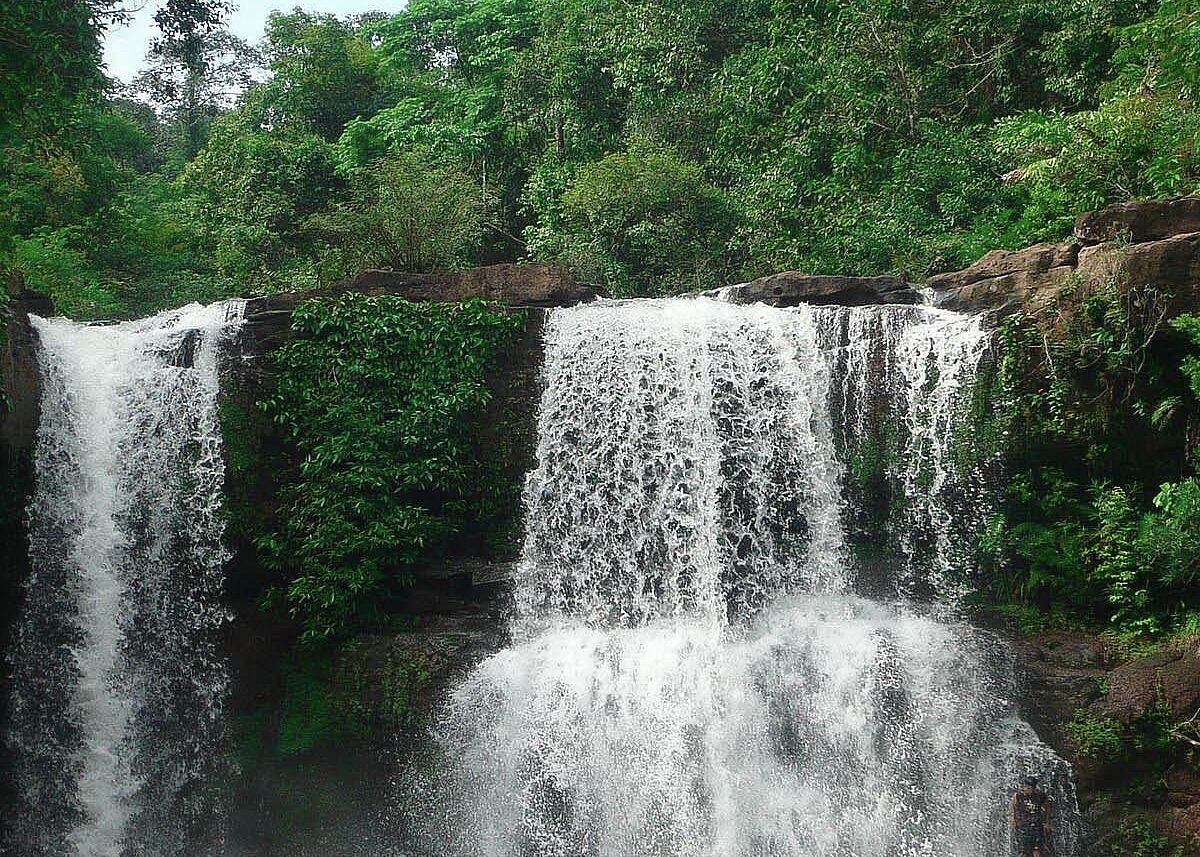
Imagine an island where phones go silent and coconut trees do the talking, that’s Koh Kood (also spelt Ko Kut). This destination is tucked away near the Cambodian border in the Gulf of Thailand. Koh Kood is often described as what Phuket might’ve been decades ago.
It’s the kind of place with emerald jungles, cascading waterfalls, fishing villages on stilts, and beaches so empty you’ll wonder if you accidentally became a castaway. If your dream getaway involves equal parts adventure and hammock-naps, Koh Kood is calling.
Attractions & vibe
Nature is the main attraction here. Beaches like Ao Tapao and Bang Bao invite you to unwind with soft sand and bath-warm waters.
Feeling exploratory? Trek through the lush rainforest to find Klong Chao Waterfall, a beautiful three-tiered cascade with a cool plunge pool perfect for a refreshing dip. (Legend has it even a Thai prince once bathed here.)
Another worthy excursion is to the fishing village of Ao Salad or Ban Ao Yai, where brightly painted boats bring in the day’s catch and wooden walkways connect rustic houses. Koh Kood’s vibe is serene and slow-paced: electricity and internet can be spotty in parts, but that just means more time for stargazing, board games, or old-fashioned conversation by the bonfire.
Local food & customs
Seafood lovers, rejoice. On Koh Kood, dinner might be a plate of fried squid with garlic, tamarind-glazed prawns, or a classic Thai yellow crab curry, all incredibly fresh. Many small family-run restaurants serve catch-of-the-day specials, often you’ll spot the owner also doubling as the fisherman.
One charming custom, if you stay in a village homestay, don’t be surprised if you’re invited to join the hosts for a home-cooked meal or a local fishing trip at dawn. It’s all about community on Koh Kood.
Basic bungalows or homestays start around 500 to 800 baht per night (fan, cold water, simple bed), while mid-range options with AC and hot water run 1000 to 1500 baht. And since most activities on Koh Kood involve Mother Nature, who thankfully doesn’t charge, you’ll save on tours and tickets.
Getting there
Reaching Koh Kood is easy with a bus + ferry combo via 12Go, departing Bangkok (Khao San or Ekkamai) to Laem Sok Pier, then a scenic 1-hour ferry to the island. Operators like Boonsiri run this daily, so booking ahead ensures your seat, especially with limited departures.
Once on Koh Kood, songthaews or resort transfers will take you to your stay for a small fee
Mae Sot Town
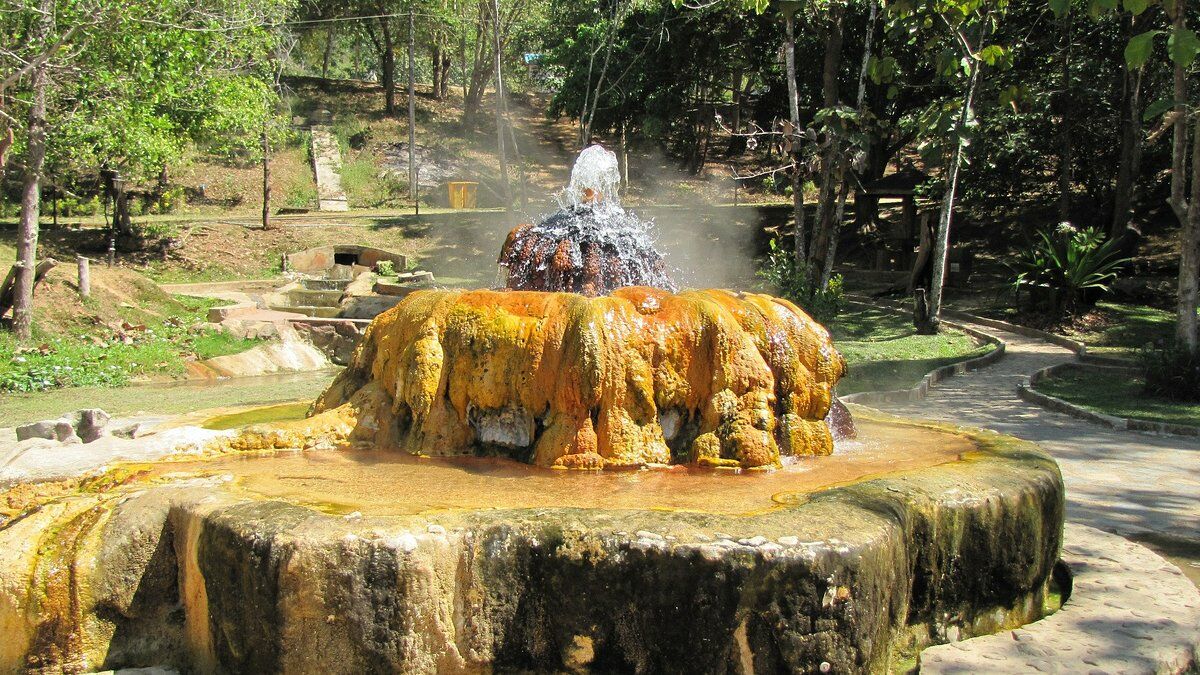
Far west of Tak province, Mae Sot is a fascinating border town where Thailand and Myanmar meet (there’s a bridge connecting the two countries). Often overlooked by travellers, Mae Sot rewards those who visit with a unique mix of cultures, bustling markets full of Burmese and Thai goods, and access to natural attractions in the mountains.
It’s the kind of town where you might hear Thai, Burmese, and Karen languages on the same street and find chapatis and curries alongside som tam.
Attractions & vibe
The heartbeat of Mae Sot is its border market along the Moei River. You’ll find gemstones, tribal textiles, and giant bags of Burmese snacks. Haggling is expected, so channel your inner trader.
You can also cross the Thai-Myanmar Friendship Bridge (passport required) into Myawaddy, but even if you stay on the Thai side, the multicultural energy is everywhere. Visit temples like Wat Thai Wattanaram with its reclining Buddha and Wat Manee Praison, known for its colourful mosaic-covered pagodas.
Nature lovers can explore Mae Ka Sa hot springs or Taksin Maharat National Park. Mae Sot’s vibe is lively but low-key, a working town with real grit and warmth.
Local food & customs
Mae Sot’s dining scene is a culinary adventure. Owing to the Burmese and ethnic Karen communities, you can taste dishes in this destination here that are rare elsewhere in Thailand.
Start your morning with a cup of Burmese tea, thick and sweet, paired with samosas or poori (fried bread) from a street stall. For lunch, hunt down Mohinga, a classic Burmese rice noodle soup with fish broth, lemongrass, and crunchy fried toppings, it’s comfort in a bowl.
Another local favourite is Burmese-style curry (rich, hearty, often with chicken or mutton) served with naan-like bread. Of course, you can still get Thai staples: the night market offers pad thai, grilled meats, and spicy papaya salad, plus Tak province’s speciality deep-fried insects if you’re brave (crispy silkworm, anyone?).
Culturally, Mae Sot is a melting pot: you’ll see Buddhist temples, a prominent mosque, and even a church or two. The town has also long been a hub for humanitarian workers and NGOs (due to refugee camps nearby), so don’t be surprised if you bump into folks from around the world doing volunteer work.
Accommodation in Mae Sot is refreshingly affordable, with basic guesthouses and hotels starting around 400–600 baht per night, often including Wi-Fi and breakfast.
Getting there
Mae Sot might feel remote, but 12Go makes it easy. Book a direct bus from Bangkok (8–9 hrs from Mo Chit) or a 6 to 7 hr ride from Chiang Mai via Tak. Tuk-tuks from the station cost around 60 baht.
Nong Khai Town
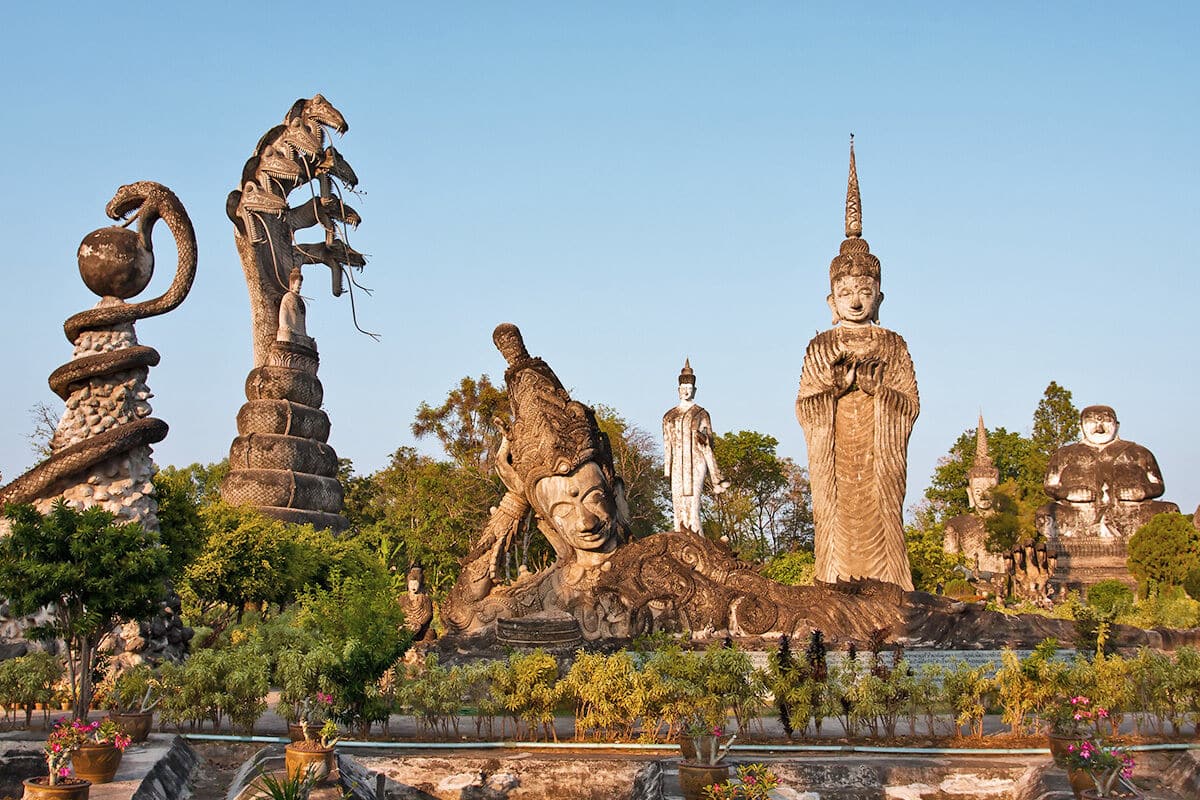
Up in Thailand’s northeast, where the Mekong River marks the border with Laos, lies Nong Khai, a charming town of easy-going Isaan culture and a dash of mystery. Often overlooked by travellers en route to Laos, those who stay find riverfront markets, surreal sculpture parks, and spicy street eats. It’s slow, friendly, and full of small surprises.
Attractions & vibe
The Mekong takes centre stage here. Sunset strolls along the Rim Khong promenade reveal views of Laos and Tha Sadet Market.
Don’t miss Sala Kaew Ku, an eccentric sculpture park filled with towering concrete deities and mythical beasts, it’s like stepping into a dreamscape. Nong Khai is also known for the mysterious Naga Fireballs, glowing orbs said to rise from the Mekong at the end of Buddhist Lent. Locals also gather along the river during the Naga Fireball Festival, when glowing orbs supposedly rise from the water.
Even skeptics enjoy the lively atmosphere. Days are quiet and hot; evenings buzz with night market energy, Isaan dialect, and perhaps a bit of traditional mor lam music if you’re lucky.
Local food & customs
You’re in Isaan territory, home of sticky rice and serious spice. Nong Khai’s cuisine is a flavourful mix, starting with Naem Nueng, a Vietnamese-style DIY spring roll with grilled pork meatballs, herbs, and dipping sauce.
Along the river, enjoy grilled Mekong fish (tilapia or river catfish) with green chilli dip and sticky rice, hands-on eating encouraged! You’ll also find fiery staples like som tam (papaya salad), larb (minced meat salad), and local favourite khao jee, a grilled sticky rice patty dipped in egg.
Culturally, Nong Khai locals are known for warm hospitality and deep spiritual ties to the Naga, a mythical serpent of the Mekong. You’ll spot Naga motifs across temples and riverside areas. At Wat Pho Chai, join in the water-pouring ritual over the Naga statue for blessings.
Accommodation in Nong Khai is budget-friendly, with riverside guesthouses starting around 500 baht for a fan room and 800 baht for air-con. If you’re after a little comfort, 1200 to 1500 baht gets you a boutique hotel, often with river views or even a pool.
Getting there
Book your train or bus to Nong Khai easily. The overnight train from Bangkok is scenic and comfortable and you should opt for a sleeper bunk and wake up to the Mekong sunrise.
Buses from Mo Chit take about 9 hours, with VIP options available. Once in Nong Khai, tuk-tuks from the station will get you to the river in minutes. With 12Go, getting to this mellow Mekong town is smooth sailing.
Phitsanulok City
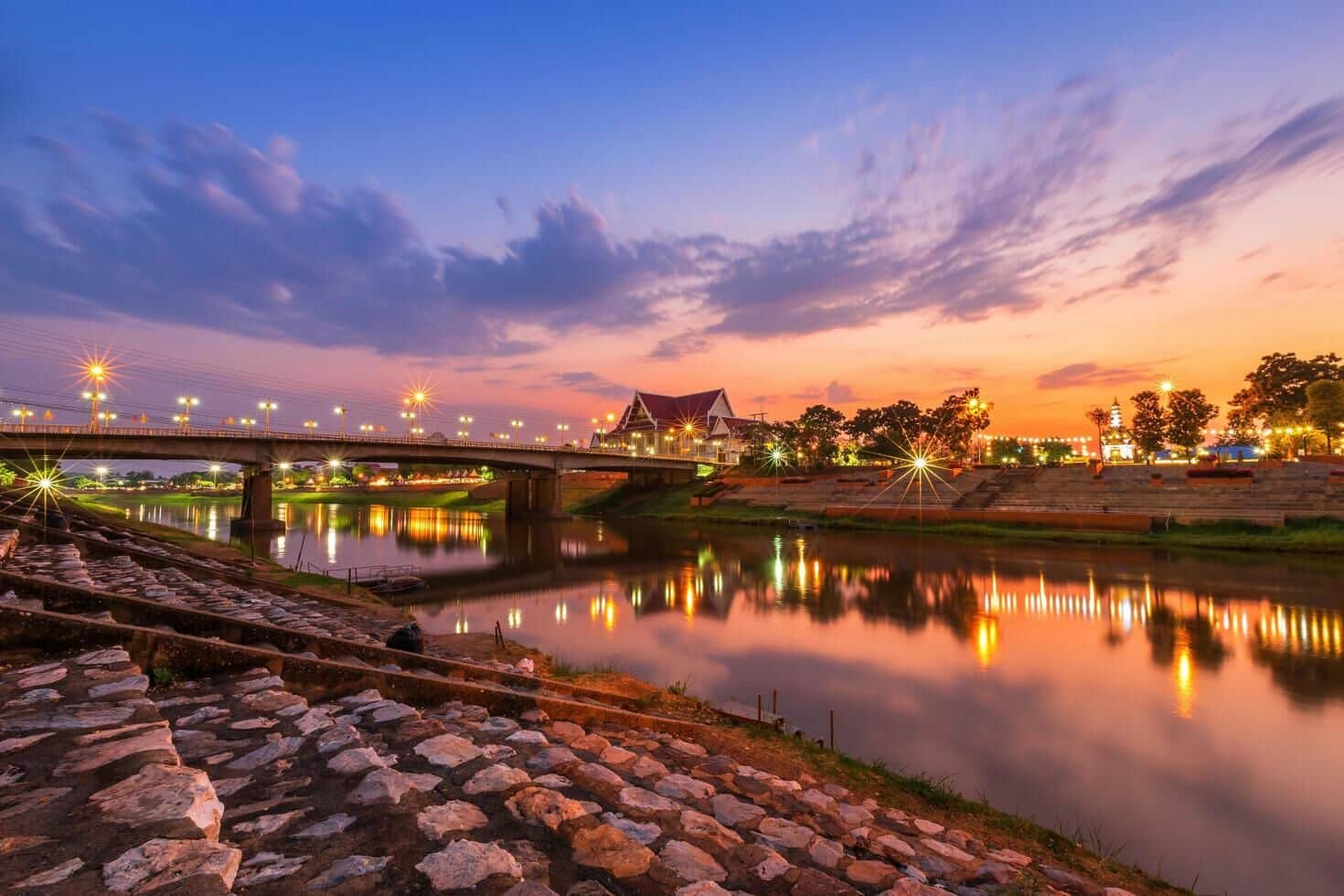
Often bypassed for Chiang Mai or Sukhothai, Phitsanulok (or “P’lok”) quietly shines with history, hearty street food, and local charm. Once a royal capital of the Ayutthaya Kingdom, this riverside city is now a cultural stop with fewer tourists and plenty of soul.
Attractions & vibe
The city’s spiritual heart is Wat Phra Si Rattana Mahathat (Wat Yai), home to the revered Phra Buddha Chinnarat, considered one of Thailand’s most beautiful Buddha images. Nearby, vendors sell amulets and snacks like grilled bananas.
History lovers can visit the Sgt. Maj. Thawee Folklore Museum or the Chan Royal Palace ruins, birthplace of King Naresuan. For something fun and local, catch the Flying morning glory show at a popular eatery. Come evening, the Nan River promenade fills with night market stalls and street performers. P’lok blends modern living with traditional Thai energy, casual, welcoming, and refreshingly unpolished.
Local food & customs
Street food in Phitsanulok is a highlight. Each evening, the Phitsanulok Night Bazaar near Wat Yai comes alive with local eats. Must-tries include Kuay Tiew Phitsanulok, a noodle soup with pork toppings in a spicy, herbal broth, and grilled quail, tiny, flavour-packed birds sold by the half-dozen at roadside carts.
For breakfast, locals enjoy jok or khao tom with crispy pla tapian (river fish). Got a sweet tooth? Try local banana desserts, dried or in syrup, thanks to the region’s banana farms.
Phitsanulok takes pride in its heritage, especially King Naresuan, whose name appears across the city. During events like the Phra Buddha Chinnarat Fair in January or Nan River boat races later in the year, you’ll see that pride in full celebration mode. Just dress modestly at temples, and bring a hearty appetite. P’lok is as welcoming as it is flavourful.
You can find simple guesthouse rooms or hotels from 500–800 baht per night (often with air-con, TV, private bath). One more tip: Phitsanulok is a perfect base to visit Sukhothai (1 hour by bus, ~50 baht) – staying here and day-tripping to Sukhothai can be cheaper than the limited options in Old Sukhothai.
Getting there
Phitsanulok is a major stop on the Bangkok-Chiang Mai route. Use 12Go to book a train or bus from Bangkok, sleeper trains are a popular choice for comfort and time-saving.
From Chiang Mai, book a bus (6 to 7 hrs) or a day train (8 hrs). Both train and bus stations in Phitsanulok are close to the centre, and local tuk-tuks or moto taxis make getting around simple. With 12Go handling your tickets, you’ll roll into your destination stress-free and ready for the real Thailand.
Nakhon Ratchasima (Korat) City

Welcome to Korat, the lively gateway to Thailand’s northeast. A city where shopping malls and old city gates coexist, Korat blends modern life with deep-rooted tradition. Though often bypassed by tourists, it’s worth a stop for Khmer ruins, hearty Isaan food, and a taste of real northeastern Thai culture.
Attractions & vibe
Start your visit in Korat city’s old town, where remnants of the ancient wall surround the Ya Mo Monument, a tribute to Thao Suranari, a local heroine locals honour with garlands and wooden elephants. Just steps away, the Korat Museum inside the old city gate offers a quick look at the city’s past.
For a cultural day trip, head to Phimai Historical Park (1 hour away), a stunning Khmer-era temple complex with carved sandstone sanctuaries and a Naga bridge, like a peaceful, mini Angkor Wat. If nature’s more your style, visit Khao Yai National Park (2 hours away via Pak Chong) for jungle hikes, waterfalls, and maybe a glimpse of wild elephants.
Back in town, go to Save One Night Market, one of Thailand’s largest, packed with food, clothes, and bargain finds. For something handcrafted, stop by Dan Kwian pottery village for unique rustic ceramics.
Korat’s vibe is bustling and proudly local, you’ll encounter students, air force personnel, and villagers in town for trade. It’s a true Isaan city: lively, warm, and full of character, even if English is spoken less often.
Local food & customs
This is Isaan food central. Try Pad Mee Korat, a spicy stir-fried rice noodle dish unique to the region, and Korat-style grilled chicken (kai yang) with tangy jaew dip and sticky rice. Pair it with som tam pla ra (papaya salad with fermented fish) if you’re bold, or go classic. Adventurous eaters can try larb kua (herbed pork with blood) or stick with grilled beef skewers.
The city’s proud of its roots, expect to see Ya Mo’s statue everywhere, especially during her March festival.
Fun fact: Korat is home to the rare Korat cat breed, considered lucky.
Clean local hotels or guesthouses around 600 to 800 baht per night in the city. There are also fancy hotels (with pools and all) for 1500 to 2000 baht if you’re splurging.
Getting there
Korat is easy to reach via 12Go. Search routes from Bangkok (Mo Chit or Ekkamai), with frequent buses and trains available to book online.
If you prefer the train, 12Go lists all departure times and seat types. Korat also connects with many northeast cities, look up routes from Khon Kaen, Ubon Ratchathani, and more. Once in Korat, the two main bus terminals and the train station are a short ride from the centre.
Lampang City
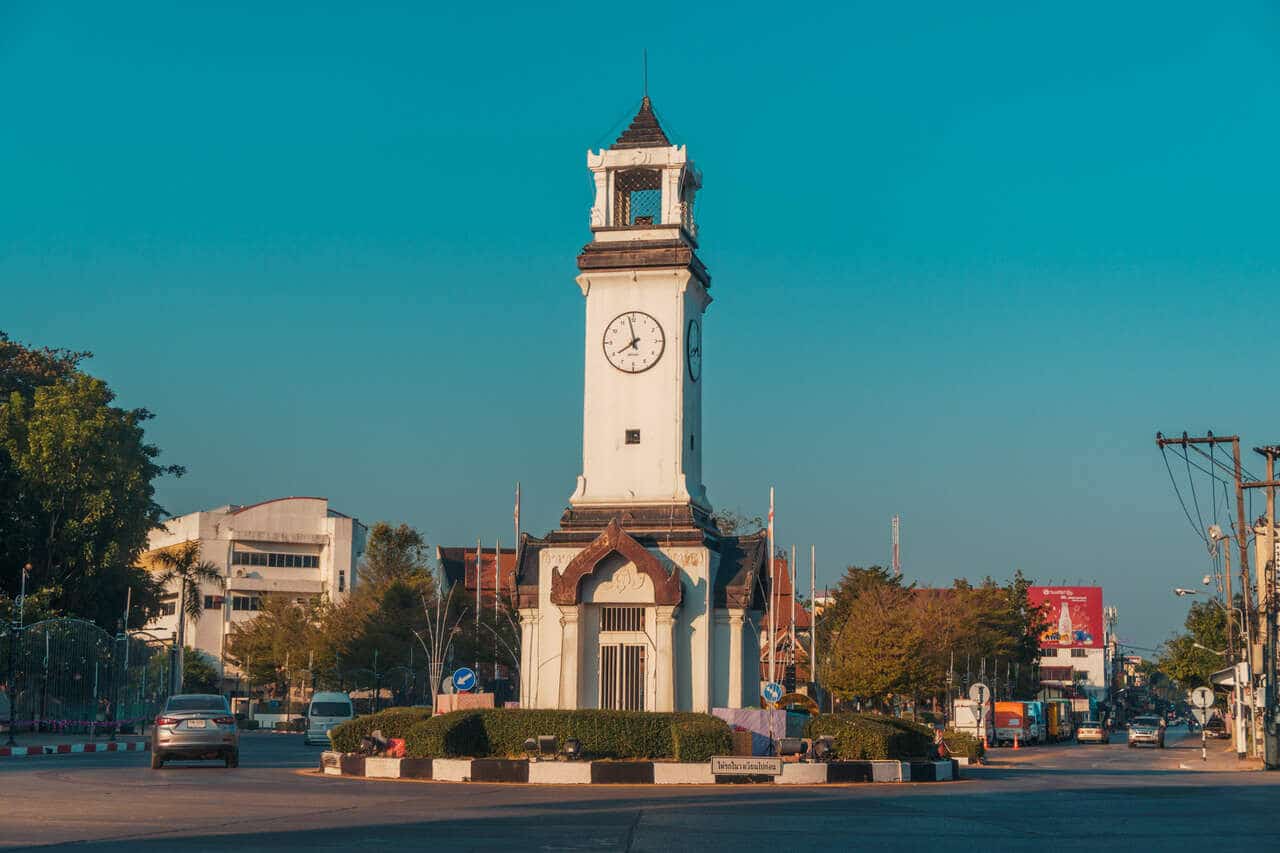
If Chiang Mai is Northern Thailand’s superstar, Lampang is its underrated sibling, quieter, more relaxed, and wonderfully preserved.
Nestled along the Wang River, Lampang is the only city in Thailand where horse-drawn carriages are still a regular mode of transport, used by locals and tourists alike. It’s a city that wears its history on its sleeve, from teakwood mansions and ancient temples to a laid-back pace that’s hard not to fall in love with.
Attractions & vibe
The signature experience in Lampang is a leisurely horse carriage ride around the old town. Clippity-clop past teak houses and leafy streets, it’s delightfully old-fashioned and photogenic. You’ll pass highlights like Wat Phra Kaew Don Tao, once home to the Emerald Buddha, and Wat Phra That Lampang Luang, a stunning walled temple complex outside the city known for its Lanna architecture.
Back in town, history lovers will enjoy Ban Sao Nak, a 100-year-old teakwood mansion turned museum. Don’t miss Kad Kong Ta walking street on weekend evenings, lanterns, snacks, and crafts line the old market street. Lampang’s vibe is unhurried and friendly. It’s a provincial town at heart, perfect for a breather from big cities.
Local food & customs
Feast on northern Thai delights like sai ua (herb sausage), khao soi, and nam prik noom from morning markets. Try Sarod’s fried rice cakes, a unique Lampang snack glazed with watermelon syrup and sesame. For dinner, grab Lampang-style chicken rice or khua sen noodles from street stalls.
Locals speak the melodic Kham Muang dialect and often use “jaa” instead of “ka/krub.” The annual Horse Carriage Festival in April features decorated parades and traditional pageants. Lampang is also known for its ceramics, those white rooster bowls? Lampang-made. Some factories offer tours, and picking up a ceramic mug is a fun local tradition.
Budget guesthouses in Lampang start at around 500 baht per night, many in old converted houses which add to the charm. Mid-range hotels (with A/C, wifi, maybe a pool) might be 1000 to 1200 baht. There are also a couple of riverside boutique resorts that still hover around 1500 to 1800 baht.
Getting there
Using 12Go, you can easily book a train to Lampang. Most Bangkok–Chiang Mai trains stop in Lampang, and 12Go will show you timing and seat options; just select Lampang as your destination.
If you’re starting from Bangkok, consider the overnight train (with cosy sleepers) or a daytime train if you want to enjoy countryside views (cue mountains and rice fields).
Phayao Town
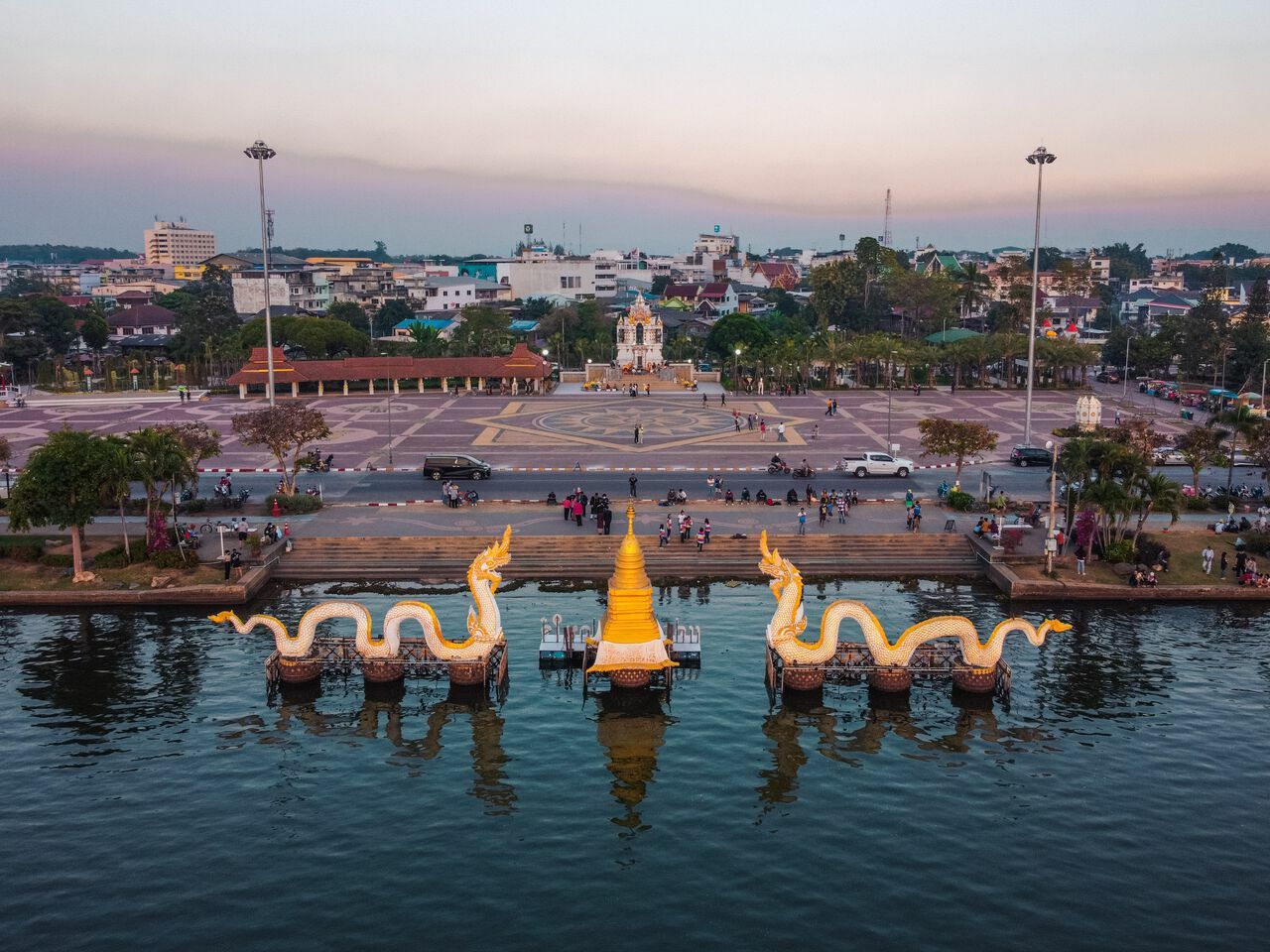
Tucked between Chiang Rai and Nan, Phayao is a small, often-overlooked town that rewards visitors with misty mountain views, tranquil lakefronts, and genuine local charm. The town wraps around Kwan Phayao, one of Thailand’s largest freshwater lakes, creating a relaxed, almost seaside vibe, minus the sand.
Attractions & vibe
The highlight is Phayao Lake, perfect for morning jogs or sunset strolls. Locals picnic by the shore as the sky turns pastel over the mountains. Out on the lake, you’ll spot Wat Tilok Aram, a semi-submerged temple marked by a floating platform. Boat rides are available for a closer look, especially during festivals.
Nearby, Wat Si Khom Kham houses a 16-metre gilded Buddha and often hosts night markets and local events. For a nature escape, drive to Phu Langka Forest Park for sunrise over a sea of fog among karst peaks. Closer to town, Ban Dok Bua Village offers a look at traditional lotus weaving.
Phayao’s vibe is calm and unpretentious. Life revolves around the lake, the university, and the community. Shops close early, nightlife is minimal, and the pace is delightfully slow.
Local food & customs
Being a lake town, freshwater fish dishes shine. Try spicy tom pla Kwan Phayao or grilled tilapia with herbs. For breakfast, locals enjoy congee with catfish or a regional spin on khao soi. Phayao is also known for its citrus – look out for sweet green oranges at roadside stalls.
You’ll see a blend of Lanna and Lao traditions here. During Loy Krathong, hundreds of floating offerings light up the lake. And every evening, a bell rings at the temple as locals pause for a moment of reflection, a peaceful daily ritual.
Phayao isn’t crawling with hotels, but the ones present are very affordable. Guesthouses by the lake charge about 500 to 700 baht for a clean fan or A/C room. There are a couple of newer boutique hotels (some run by the university or locals) in the 1000 baht range if you want something a bit fancier or with a lake view balcony.
Getting there
Phayao has no train or airport, but 12Go helps you get there. Book direct buses from Bangkok or connections from Chiang Mai or Chiang Rai. Most buses stop near the town centre, just a short walk or tuk-tuk ride from accommodations.
Plan your ride ahead, especially since buses aren’t frequent. Once there, the planning melts away, leaving just misty mornings, peaceful water, and the quiet rhythm of local life.
Mae Sai Town
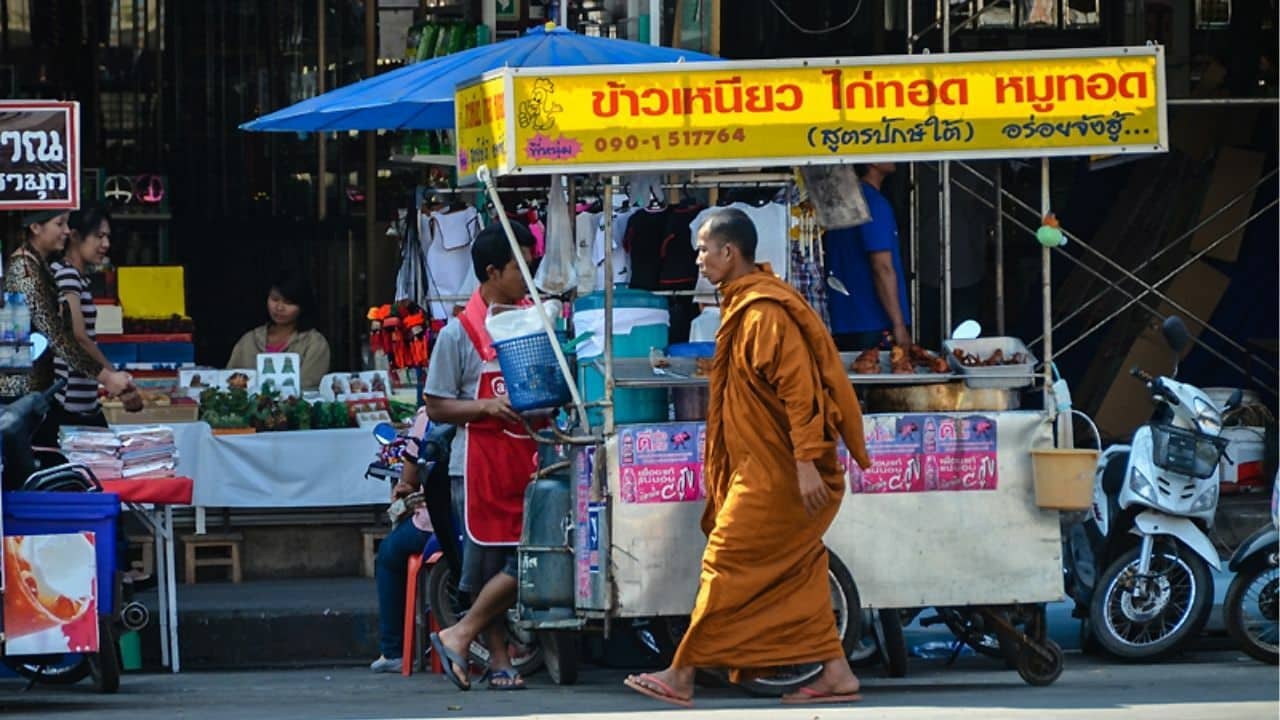
At the very top of Thailand sits Mae Sai, a buzzy border town known as “The Northernmost Point of Thailand.” Right across the bridge lies Myanmar, making Mae Sai a cultural crossroads where Thai, Burmese, and even Yunnanese influences blend.
Many pass through for visa runs or trips to the Golden Triangle, but the town itself has plenty to explore.
Attractions & vibe
The main attraction is the Thailand-Myanmar Friendship Bridge, where you can snap a pic under the famous northernmost arch. Near it, the Mae Sai Market sprawls with jade, trinkets, tea, and snacks, a chaotic but fun shopping scene.
For a panoramic view, head up Doi Wao hill to Wat Phra That Doi Wao, home to a large scorpion statue symbolising Lanna resistance and overlooking Myanmar. Another must-visit: Tham Luang Cave, the site of the 2018 rescue, is now open seasonally as a memorial and tourist spot.
Mae Sai’s vibe is lively and a bit gritty, a trading hub filled with monks, merchants, and migrants. Look deeper, and you’ll see daily life unfolding: students biking home, monks collecting alms, and locals chatting over soup.
Local food & customs
Mae Sai’s food is a mix of Thai, Burmese, and Yunnanese flavours. Don’t miss laphet thoke (fermented tea leaf salad), Burmese samosas, or khao soi Mae Sai, a regional twist on northern curry noodles.
Also, try gaeng hang lay (a sweet-sour Burmese pork curry) or Yunnan-style noodles. Thai classics like nam prik ong and som tam are everywhere, sometimes with a Burmese twist.
The town reflects its multicultural mix. You’ll hear “Mingalaba” as often as “Sawadee,” see men in jeans and longyi, and observe overlapping Thai and Burmese Buddhist rituals, especially at temples like Wat Doi Wao.
Several budget hotels and guesthouses cater to border runners; you can find a decent fan room for 400 baht, or an air-con room for around 600 to 800 baht. Some newer hotels with modern amenities are a bit more, say 1000 to 1200 baht, but those are exceptions.
Getting there
From Chiang Mai or Chiang Rai, many travellers will use the bus, and 12Go offers bookings for those. For instance, book a Chiang Mai to Mae Sai bus (likely connecting in Chiang Rai) or simply a Chiang Rai to Mae Sai minivan, 12Go’s platform will show schedules, usually hourly or better between Chiang Rai and Mae Sai since it’s a common route.
If you’re coming all the way from Bangkok, you have a couple of options: direct buses (long ride, but available, check 12Go for any direct VIP buses to Mae Sai), or break the journey by taking a comfortable overnight bus or train to Chiang Mai/Chiang Rai first.
With 12Go’s help, you can secure your transport tickets in advance, ensuring you won’t arrive to find everything fully booked (important during holiday periods when many locals travel). So go ahead and plan that journey, soon you’ll be standing at Thailand’s edge in Mae Sai, possibly contemplating a spontaneous Myanmar side-trip, and definitely soaking up the one-of-a-kind atmosphere of this border bazaar town.
Each of these 10 spots, Koh Samet, Sukhothai, Koh Kood, Mae Sot, Nong Khai, Phitsanulok, Nakhon Ratchasima, Lampang, Phayao, and Mae Sai, invites you to discover a different facet of Thai culture, nature, and hospitality.
The best part? Exploring offbeat places doesn’t mean sacrificing convenience. With handy services like 12Go to book your buses, trains, ferries or vans, getting there is straightforward, leaving you more time to enjoy street food, chat with locals, and maybe ride a horse cart or two.
Who knows, your favourite travel memories might just come from that “unknown” destination that ended up stealing your heart. Happy travels, or as we say in Thai, bon voyage na kha!
Sponsored
Latest Thailand News
Follow The Thaiger on Google News:
